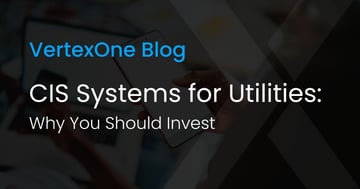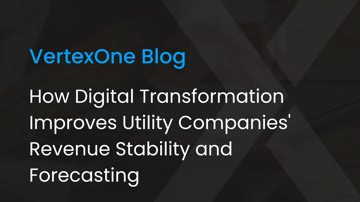 The right energy billing software can benefit both customers and utilities. Not only does it provide convenient ways to collect payments and obtain meter usage, but it also improves customer satisfaction and boosts the consumer experience.
The right energy billing software can benefit both customers and utilities. Not only does it provide convenient ways to collect payments and obtain meter usage, but it also improves customer satisfaction and boosts the consumer experience.
“Utility billing solutions” refers to the platforms or systems that monitor, oversee, and bill utility customers or anyone receiving water, gas, electricity, or other energy-related services. This type of billing utilizes meters to track usage data. Combining this data with a rate structure determines how much customers must pay during each billing period.
What energy billing software features does your utility need?
A majority of energy billing software is outdated, non-adaptable, and error-prone. Energy billing is complex. To correctly apply social programs for low-income families, provide accurate meter readings, and handle rate structure complexities due to legislation changes (e.g., environmental initiatives), energy billing software must be adaptable, easy to implement, and customer-friendly.
Comprehensive and robust energy billing software must have the following abilities:
1. Comprehensive Billing and Payment Software
Many utilities use different vendors to handle bill production, payment processing, and print and mail services. This process requires integrating multiple data systems, often resulting in a fragmented, inefficient experience for the utility and its customers.
In using future-proof energy billing software provided by a single vendor, utilities can integrate billing and payment solutions. This results in higher operational efficiency, reduced opportunity for errors, and increased revenue. The right utility customer information system (CIS) also gives customer support specialists quick access to essential account data, and customers can obtain status and payment updates in real-time.
2. Online and Mobile Self-Service Portal
Flexible customer self-service options allow customers to change or update account information such as their mailing addresses, phone numbers, and more. They can also complete the following tasks using their mobile devices or desktop computers:
-
Request services
-
Report outages
-
Make monthly payments
-
Enroll in autopay
-
View consumption history
-
Receive important data
-
View status updates on service requests
These automated customer service options allow customers to solve simple problems themselves, reducing labor costs for utilities. This gives support representatives more time to deal with complex issues, helping build better customer relationships. Improving the collections process also lowers utility debt, increases revenue, and enhances the organizational cash flow.
3. Metering System Investments
Advanced metering infrastructure (AMI) allows utilities to automatically and remotely measure consumer usage, connect and disconnect service, detect unlawful tampering, identify and isolate outages, and more.
Remote meter reading and service order management offer many advantages, including:
-
Greater accuracy in measuring usage, resulting in fewer billing errors.
-
Reduced labor costs and greater ROI.
-
Prompt dispatch of repair crews during outages, disruptions, or service problems.
-
Faster service restoration when outages take place.
-
Automated alerts and status updates for the utility, field technicians, and customers.
4. Cloud-Based Storage
Cloud-based billing solutions can be implemented quickly and often cost less upfront, resulting in higher profit and lower risk for the utility. Although cloud CIS solutions once seemed intimidating to utility providers, modern utility CIS software offers high levels of security, protection, flexibility, and scalability.
Cloud-based energy billing software provides regular updates, real-time monitoring that reflects account changes immediately, quick access to customer data, and 24/7 access to billing information, flexibility, and scalability. This improves business resilience because there is less physical risk of losing valuable consumer data.
Does your energy billing software meet customer needs?
Customer expectations are rapidly changing. Can your utility keep up? Click here to download the Guide to the Ultimate Utility Customer Information System, which will help you:
-
Define your customers’ expectations.
-
Gain buy-in from your employees.
-
Support strategic objectives.
-
Find a solution that benefits your utility and the communities it serves.





